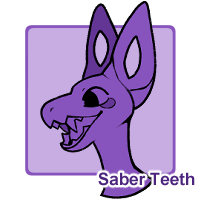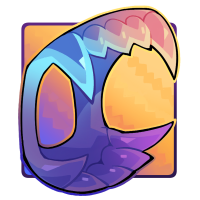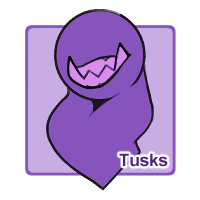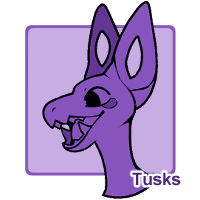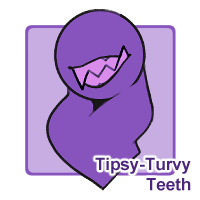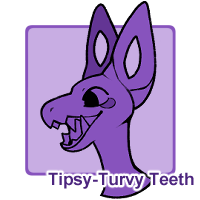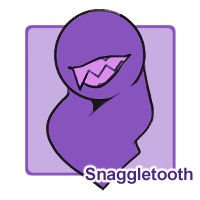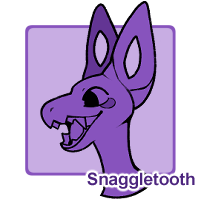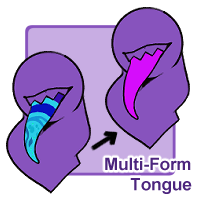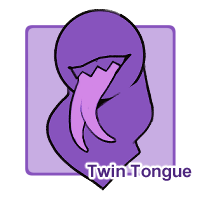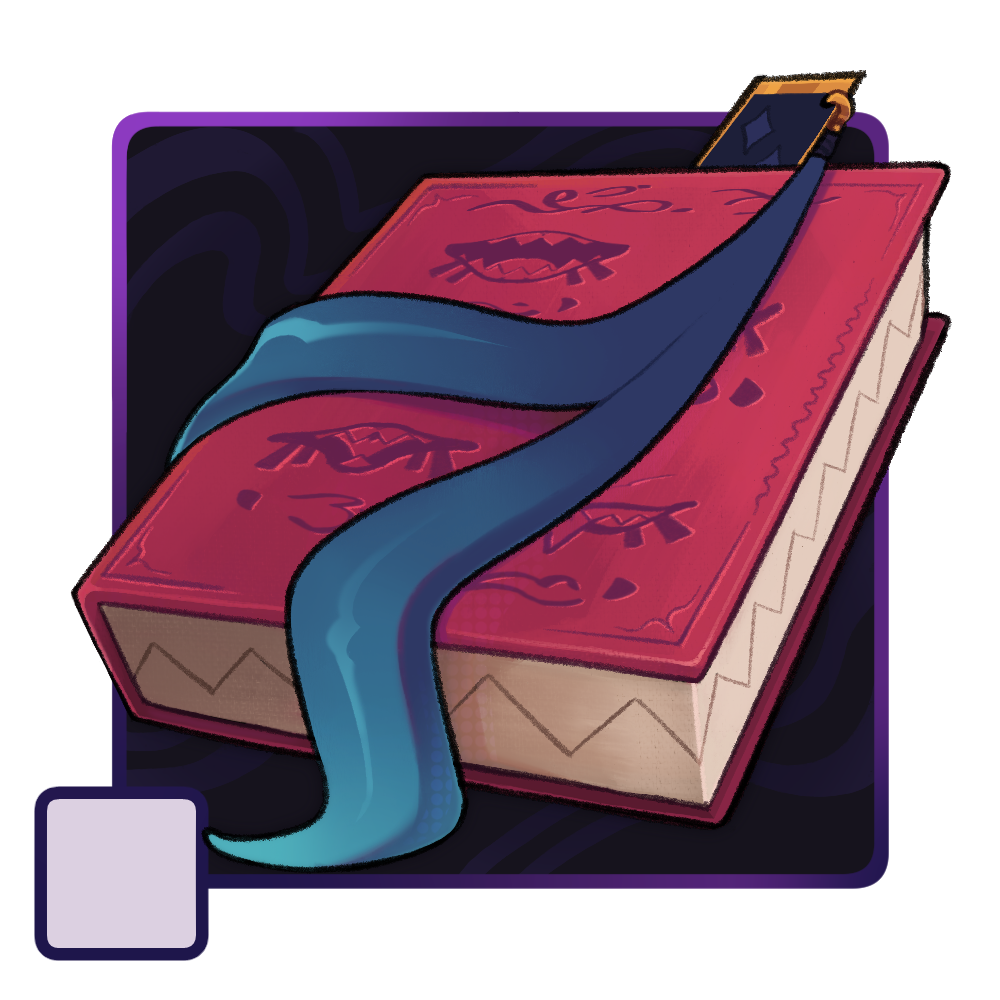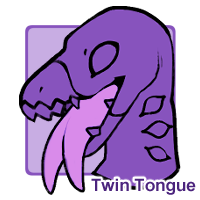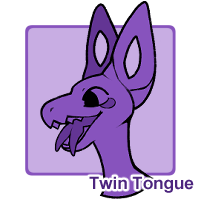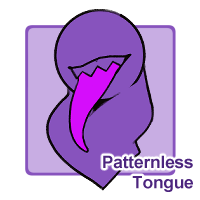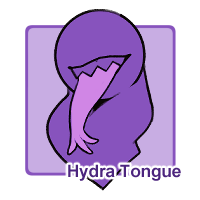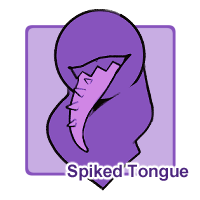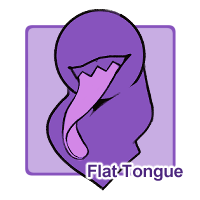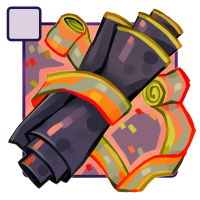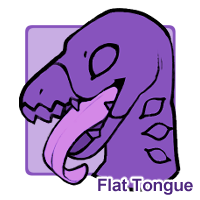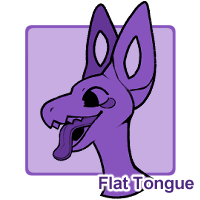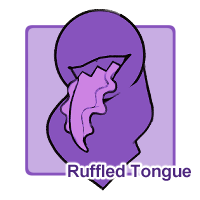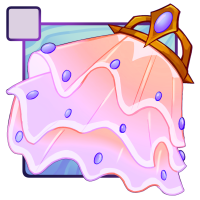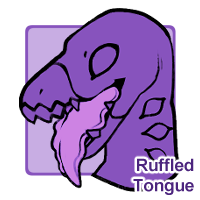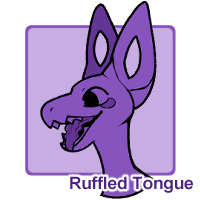Traits
[ Click here for Visual Sorter! ]
Saber Teeth (Gravents) (Rare)
[Two large upper-mouth teeth, externally visible]
- Sabers must protrude from the mouth
- This trait can be stacked to allow for multiple sets of Sabers
Can be applied by:
Tusks (CCCats) (Rare)
[Two large lower-mouth teeth, externally visible]
- Can be long tusks or shorter fangs that do not extend from the mouth
- This trait can be stacked to allow for multiple sets of Tusks
Can be applied by:
Tusks (Gravents) (Rare)
[Two large lower-mouth teeth, externally visible]
- Tusks must protrude from the mouth
- This trait can be stacked to allow for multiple sets of Tusks
Can be applied by:
Tipsy-Turvy Teeth (CCCats) (Rare)
[Two large teeth, one placed on the lower jaw and one placed on the upper jaw in opposite spots of the mouth]
- Can be long teeth or shorter fangs that do not extend from the mouth
- Must be opposite from one another to some extent, cannot directly overlap
- This trait can be stacked to allow for multiple sets of Tipsy Turvy Teeth
- Does not require the use of Saber Teeth or Tusks alongisde, but may be combined with them
Can be applied by:
Tipsy-Turvy Teeth (Gravents) (Rare)
[Two large teeth, one placed on the lower jaw and one placed on the upper jaw in opposite spots of the mouth]
- Teeth must protrude from the mouth
- Must be opposite from one another to some extent, cannot directly overlap
- This trait can be stacked to allow for multiple sets of Tipsy Turvy Teeth
- Does not require the use of Saber Teeth or Tusks alongisde, but may be combined with them
Can be applied by:
Snaggletooth (CCCats) (Rare)
[One tooth that is larger than the others or protrudes from the mouth]
- Can be a long tooth or shorter fang that does not extend from the mouth
- Counts for one larger Saber, Tusk, or Fang
- Does not stack, as stacking would turn this trait into Saber, Tusks, or Tipsy-Turvy Teeth
Can be applied by:
Snaggletooth (Gravents) (Rare)
[One tooth that is larger than the others and protrudes from the mouth]
- Tooth must protrude from the mouth
- Counts for one larger Saber, Tusk, or Fang
- Does not stack, as stacking would turn this trait into Saber, Tusks, or Tipsy-Turvy Teeth
Can be applied by:
Multi-Form Tongue (Rare)
[The tongue changes between each new form of the CCCat. Any new tongue traits added must be counted additionally, but the tongue can switch color and pattern between forms using this trait. ]
- This trait is only applicable when a design has Multiple Forms. If the design has more than one additional form, only once instance of this trait is needed.
- Each tongue is attached to a form, and changes when the forms change.
- Traits may differ between each tongue, but require the additional traits present. If the tongues share a trait, only one instance of that trait is needed
- Tongue does not change unless the form changes.
- Tongue is not an additional or different tongue, but is the base tongue changing form.
- CCCATS - A CCCat’s tongue must be above 43% saturation and value to be considered a living tongue. Please provide a flat and unshaded eye reference when submitting a MYO or Redesign (MYO and Redesign Guide)
Twin Tongue (Rare)
[The tongue splits up to halfway down its length]
- Each tongue tip can be affected by tongue tip traits
- Cannot split more than halfway down the tongue
- CCCATS - A CCCat’s tongue must be above 43% saturation and value to be considered a living tongue. Please provide a flat and unshaded eye reference when submitting a MYO or Redesign (MYO and Redesign Guide)
Can be applied by:
Twin Tongue (Crooks) (Rare)
[The tongue splits up to halfway down its length]
- Each tongue tip can be affected by tongue tip traits
- Cannot split more than halfway down the tongue
Can be applied by:
Twin Tongue (Gravents) (Rare)
[The tongue splits up to halfway down its length]
- Each tongue tip can be affected by tongue tip traits
- Cannot split more than halfway down the tongue
Can be applied by:
Patternless Tongue (Rare)
[Tongue with no pattern or that only has a gradient of color]
- Tongue is either completely solid in color or is a multicolored gradient with no pattern
- Cannot be affected by tongue marking traits
- CCCATS - A CCCat’s tongue must be above 43% saturation and value to be considered a living tongue. Please provide a flat and unshaded eye reference when submitting a MYO or Redesign (MYO and Redesign Guide)
Hydra Tongue (Rare)
[Tongue with multiple splits at the tongue tip]
- Can be split 3-4 times at the tip
- Counted by number of tongue tips
- Cannot split more than a quarter up the tongue
- Should not resemble a hand
- CCCATS - A CCCat’s tongue must be above 43% saturation and value to be considered a living tongue. Please provide a flat and unshaded eye reference when submitting a MYO or Redesign (MYO and Redesign Guide)
Spiked Tongue (CCCats) (Rare)
[Tongue has small spikes]
- Spikes may be pointy, soft, leafy, blunt, slightly rounded, wiggly, thin, or thick
- Spikes may create a branching look, but should not be used to mimic multiple tongue tips elsewhere on the tongue
- Spikes cannot be overly large
- Spikes cannot cover the entirety of the tongue
- Spikes should not appear like thick branching tongues
- CCCATS - A CCCat’s tongue must be above 43% saturation and value to be considered a living tongue. Please provide a flat and unshaded eye reference when submitting a MYO or Redesign (MYO and Redesign Guide)
Flat Tongue (CCCats) (Rare)
[Tongue that is flat in shape]
- Tongue must be flat vertically or horizontally
- Tongue should still taper or round out at the end
- May not have holes, cuts, or odd shapes. You may use Odd-Shaped Tongue to create a flat tongue with the aforementioned shapes.
- CCCATS - A CCCat’s tongue must be above 43% saturation and value to be considered a living tongue. Please provide a flat and unshaded tongue reference when submitting a MYO or Redesign (MYO and Redesign Guide)
Can be applied by:
Flat Tongue (Crooks) (Rare)
[Tongue that is flat in shape]
- Tongue must be flat vertically or horizontally
- Tongue should still taper or round out at the end
- May not have holes, cuts, or odd shapes. You may use Odd-Shaped Tongue to create a flat tongue with the aforementioned shapes.
Can be applied by:
Flat Tongue (Gravents) (Rare)
[Tongue that is flat in shape]
- Tongue must be flat vertically or horizontally
- Tongue should still taper or round out at the end
- May not have holes, cuts, or odd shapes. You may use Odd-Shaped Tongue to create a flat tongue with the aforementioned shapes.
Can be applied by:
Ruffled Tongue (Rare)
[Tongue has a thin ruffle that runs down its length]
- Frill may run horizontally or vertically
- Frill may be flat or wiggly
- Tongue is standard in shape unless using other traits in combination, such as flat tongue or split tongue
- CCCATS - A CCCat’s tongue must be above 43% saturation and value to be considered a living tongue. Please provide a flat and unshaded tongue reference when submitting a MYO or Redesign (MYO and Redesign Guide)
Can be applied by:
Ruffled Tongue (Crooks) (Rare)
[Tongue has a thin ruffle that runs down its length]
- Frill may run horizontally or vertically
- Frill may be flat or wiggly
- Tongue is standard in shape unless using other traits in combination, such as flat tongue or split tongue
Can be applied by:
Ruffled Tongue (Gravents) (Rare)
[Tongue has a thin ruffle that runs down its length]
- Frill may run horizontally or vertically
- Frill may be flat or wiggly
- Tongue is standard in shape unless using other traits in combination, such as flat tongue or split tongue
